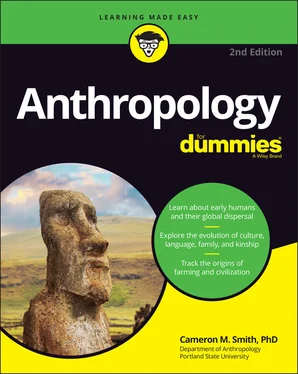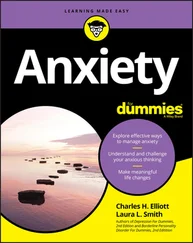1 ...7 8 9 11 12 13 ...25 By the time he was 25, Belzoni (1778–1823) had fled from a monastic school in Rome and started a 12-year career as a strongman in an English circus. Traveling to Egypt in 1815, he quickly began an extraordinary new career as an “Antiquarian.” Within a few years he had sent many ancient Egyptian relics back to London’s British Museum, including multi-ton stone statues. In 1818 he used what some called his engineering genius to locate a passage into the Great Pyramid at Gizeh; although he found that it had already been looted, his dramatically publicized adventures were enough to excite the public with tales of treasure-hunting and relics from past ages. Though he wasn’t a professional scholar, Belzoni is credited with encouraging the public to take an interest in the ancient world.
Like colonialist ethnography, antiquarian archaeology had some distinctive characteristics:
A focus on large, visible archaeology: In particular, large ruins — such as the walled city of Troy, the pyramids of Egypt, or the Parthenon — that were relatively easy to find and analyze. (This propensity for size also led to a focus on the royal families of the ancient world because they were associated with these large monuments, whereas common people were buried elsewhere and essentially ignored by archaeologists until the 1960s.)
A focus on the Western world: Early archaeologists largely believed that the West was at the pinnacle of evolution, and all other societies were either going to become Western or become extinct.
A focus on monetary value: Many sought antiquities not for their value as knowledge but as items that could be sold.
A concept of shallow time: Until the 1860s, many believed that the Earth was only a few thousand years old and that most explanations of the ancient world were in the Christian Bible.
Although archaeology began without distinctively scientific goals, by the early 1900s people knew that the Earth was very ancient and that evolution had shaped humanity as early as millions of years ago, and archaeologists had begun to make very careful records of what they found. You can check out more about modern archaeological methods in Chapter 3. For the moment, you just need to know that although the study began in antiquarianism, it developed into a modern science that has revealed a great deal about the human past.
By the 1930s, anthropology was underway as a distinctive academic field worldwide, with anthropologists trying — in different ways — to examine some of the basic questions outlined in the section “ Getting to the Heart of Anthropology” earlier in this chapter. Bodies of theory even developed, each a different lens through which to interpret the cultures worldwide (which were being documented by ethnographers). Essentially, a scientific approach was applied to the study of humanity. The key feature of the scientific approach is objectivity (the idea that one can learn about the universe impartially). For example, in prescientific times, humanity and the Earth were quite literally considered the center of the universe; but centuries of impartial, objective study show that not even our galaxy is at the center of the universe, and our species is just one of many millions or billions on Earth.
Now, like any idea, this could go too far, as when people improperly applied biological concepts to cultural change (resulting in the idea of social Darwinism , a mistaken idea I examine in Part 3of this book), but essentially it was a step in the direction of objectivity, of trying to filter out ones’ own cultural preconceptions when thinking about or documenting other cultures. It was an attempt, then, to combat ethnocentrism.
 Although some today subscribe to the postmodern philosophy, which essentially states that all knowledge is socially constructed and that you can never get out of the box (you’re hopelessly imprisoned in an ethnocentric shell) — I don’t buy it. I believe human beings can be somewhat objective and make accurate statements about what they observe. For example, I have good reason to believe that Pluto exists and will continue to exist even if humanity suddenly became extinct. From this perspective, we did not invent Pluto, we discovered it.
Although some today subscribe to the postmodern philosophy, which essentially states that all knowledge is socially constructed and that you can never get out of the box (you’re hopelessly imprisoned in an ethnocentric shell) — I don’t buy it. I believe human beings can be somewhat objective and make accurate statements about what they observe. For example, I have good reason to believe that Pluto exists and will continue to exist even if humanity suddenly became extinct. From this perspective, we did not invent Pluto, we discovered it.
 Don’t get bogged down by the hierarchy of scientific terminology regarding observations. An observation is something that you’ve seen or otherwise carefully documented; a hypothesis is a statement that proposes the relationship between two variables (for example, the liquid state of the variable water will change to the solid state when the variable temperature is sufficiently decreased). A theory is a more complex form of hypothesis, and a fact is a statement — normally based on multiple confirmed hypotheses — that can account for many well-documented observations. Note that a theory is not just a wild guess; it’s normally a well-researched and plausible proposition.
Don’t get bogged down by the hierarchy of scientific terminology regarding observations. An observation is something that you’ve seen or otherwise carefully documented; a hypothesis is a statement that proposes the relationship between two variables (for example, the liquid state of the variable water will change to the solid state when the variable temperature is sufficiently decreased). A theory is a more complex form of hypothesis, and a fact is a statement — normally based on multiple confirmed hypotheses — that can account for many well-documented observations. Note that a theory is not just a wild guess; it’s normally a well-researched and plausible proposition.
The attempt to add some scientific objectivity to anthropology led to the recognition and adoption of two very important perspectives:
The emic perspective is that of a person within a culture — it’s the insider’s view. For example, it’s a New Guinea highlander’s concept of what constitutes murder, even though a Western scientist may have a different perception of that word.
The etic perspective is that of a person from outside a culture — it’s the outsider’s view. For example, it’s a scientist’s definition of murder that he or she wants to use in comparing many different societies’ punishments for having killed another person.
Although remaining emic or etic in your fieldwork or observations isn’t always easy, anthropologists strive for both emic and etic knowledge. You can read more about emic and etic perspectives in Chapter 12.
Another idea that came into anthropology with science was the concept of holism , which is the recognition that all parts of a human culture are more or less interdependent (read that carefully — not independent, but interdependent ). It turned out that studying one single aspect of a culture wasn’t working to understand a whole culture. For example, kinship (how people reckon their relations with other members of society) can be influenced by economics, and economics can influence (or be influenced by) religion and politics.
Through time, then, anthropologists had to recognize that the many facets of the human experience were interrelated. This discovery didn’t make humans easier to study, but it was better than laboring under the impression that human societies would be easily understood. And today anthropologists are still trying to figure out how to understand the interrelations of the many facets of human culture — but at least they’re no longer deluded by the idea that every cultural institution, for example, meshes perfectly with some other institution so that both would function in perfect harmony. This idea (one of many functionalist conceptions that focused on how each aspect of culture fulfilled a certain function, like the parts of a complex machine) simply didn’t recognize that people are “messy,” and cultures are hard to draw lines around. For example, even though your culture gives you many instructions for how to behave, how many of us bend the rules on occasion (or often)? Today we borrow all kinds of behaviors from other people and other cultures, and from one generation to the next, a lot can change. This nonuniformity makes cultural anthropology a challenging study. In arithmetic, 1 + 1 = 2, but in culture, few things are so clear-cut.
Читать дальше

 Although some today subscribe to the postmodern philosophy, which essentially states that all knowledge is socially constructed and that you can never get out of the box (you’re hopelessly imprisoned in an ethnocentric shell) — I don’t buy it. I believe human beings can be somewhat objective and make accurate statements about what they observe. For example, I have good reason to believe that Pluto exists and will continue to exist even if humanity suddenly became extinct. From this perspective, we did not invent Pluto, we discovered it.
Although some today subscribe to the postmodern philosophy, which essentially states that all knowledge is socially constructed and that you can never get out of the box (you’re hopelessly imprisoned in an ethnocentric shell) — I don’t buy it. I believe human beings can be somewhat objective and make accurate statements about what they observe. For example, I have good reason to believe that Pluto exists and will continue to exist even if humanity suddenly became extinct. From this perspective, we did not invent Pluto, we discovered it. Don’t get bogged down by the hierarchy of scientific terminology regarding observations. An observation is something that you’ve seen or otherwise carefully documented; a hypothesis is a statement that proposes the relationship between two variables (for example, the liquid state of the variable water will change to the solid state when the variable temperature is sufficiently decreased). A theory is a more complex form of hypothesis, and a fact is a statement — normally based on multiple confirmed hypotheses — that can account for many well-documented observations. Note that a theory is not just a wild guess; it’s normally a well-researched and plausible proposition.
Don’t get bogged down by the hierarchy of scientific terminology regarding observations. An observation is something that you’ve seen or otherwise carefully documented; a hypothesis is a statement that proposes the relationship between two variables (for example, the liquid state of the variable water will change to the solid state when the variable temperature is sufficiently decreased). A theory is a more complex form of hypothesis, and a fact is a statement — normally based on multiple confirmed hypotheses — that can account for many well-documented observations. Note that a theory is not just a wild guess; it’s normally a well-researched and plausible proposition.










